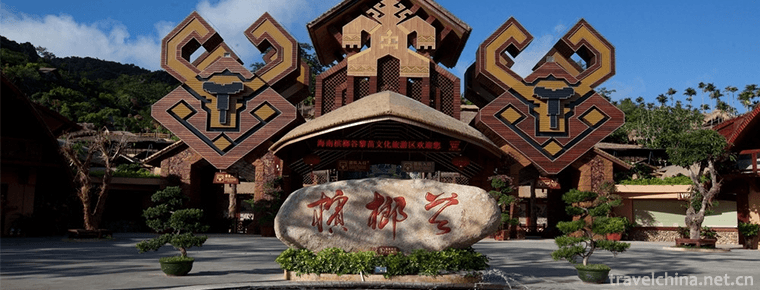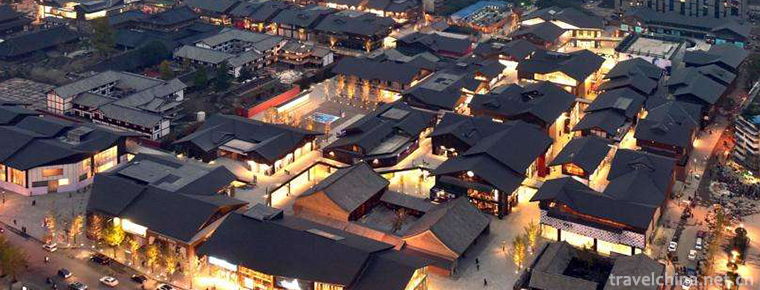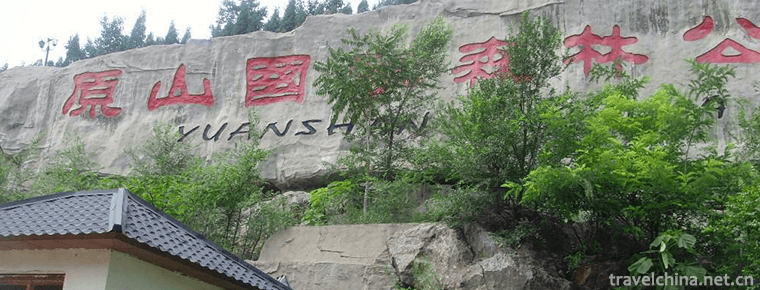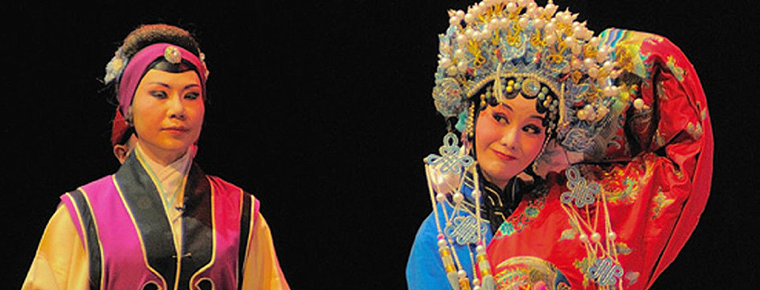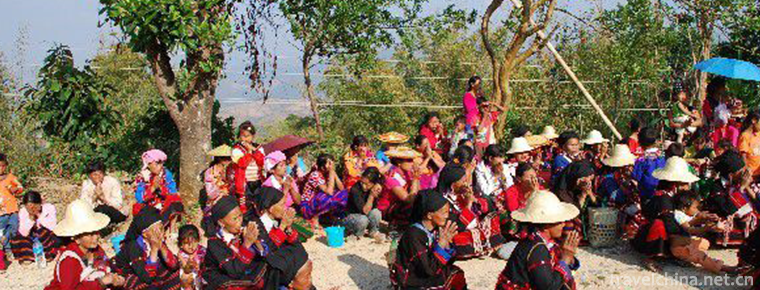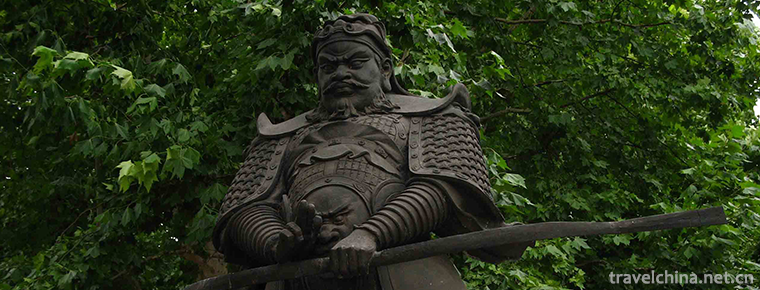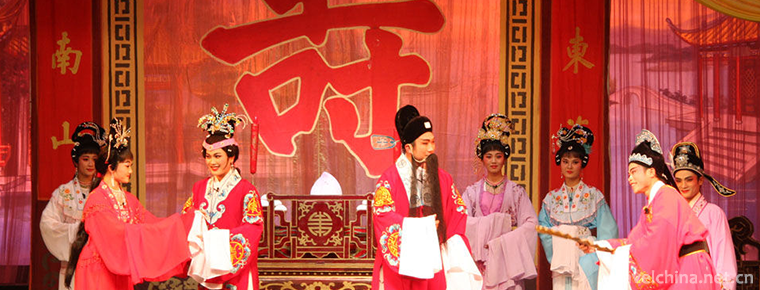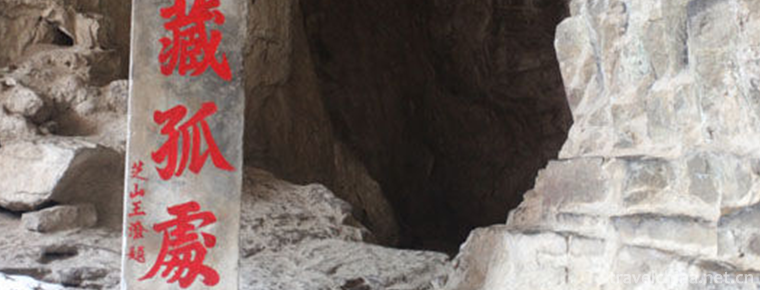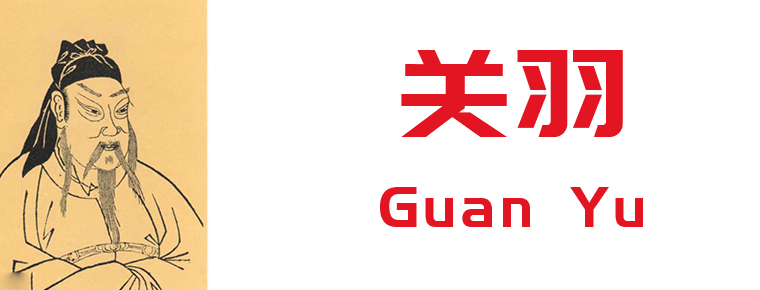Miao Lusheng Dance
Miao Lusheng Dance
Lusheng dance, also known as "stepping on Lusheng" and "stepping on the singing hall", is named for its accompaniment and self-boasting dance. It spreads in the Miao, Dong, Buyi, Shui, Gelao, Zhuang and Yao ethnic communities in Guizhou, Guangxi, Hunan, Yunnan and other places. It is the most popular and widely distributed folk dance of the southern minorities. From the analysis of the unearthed bronze Lusheng musical and dancing figurines of the Western Han Dynasty, Lusheng dance has a history of at least two thousand years. Lusheng dance is mostly performed at festival, assembly, celebration and other festive moments. There are three main types of Lusheng dance: self-entertainment, competition and etiquette.
In 2006, the Miao Lusheng Dance was listed on the national intangible cultural heritage list.
Historical evolution
About the origin of Lusheng dance, Miao people have simple and beautiful legends. Legend has it that when Pangu opened the world, the earth was desolate. At that time, the ancestors of the Miao nationality depended on hunting birds and animals for food and clothing. In order to solve the difficulty of catching birds and animals, a skillful young man cut down trees and bamboos in the forest and made a reed Sheng to imitate the songs and movements of birds and animals, blowing and jumping up to attract all kinds of birds and animals. Since then, people have gained something from every hunt, so Lusheng dance has become a necessity of life and passed on from generation to generation. This kind of legend coincides with many phenomena of Lusheng tunes and dancing movements which imitate the song and form of birds and animals. However, to clarify its origin, it still needs to be studied from the aspect of historical data.
The Legend of Ancient History of A Mao records that in ancient times, the ancestors of the Miao nationality moved to the direction of the South wind, because "the enemy Shin Dao Jue Difu attacked from Leisemif, and could not defeat the enemy after a fierce battle." On the way of migration from north to south, the ancestors of the Miao nationality "crossed the Yellow River by young people riding cattle". At night, people who crossed the river first, fearing that the latter would be lost, blew up the Lusheng and set off a bonfire to gather the people. In order to dispel the cold, people dance Lusheng with Lusheng melody. Lusheng, like flute, is a close companion of young Miao men. On the Miao's dance floor, young men often play flute with Lusheng mouth on their backs, or insert flute into their belts and blow Lusheng again. According to Yunnan Minority Nationalities, "the ever-changing Lusheng tune is the Miao family's'writing'". In Waitoushan, there is always a song and dance accompanied by a sound of Lusheng.
As for the history of Lusheng dance, there are many references in the past literature. From the analysis of the unearthed bronze figurines of Lusheng dance in the Western Han Dynasty, Lusheng dance has a history of at least 2,000 years. Since Ming and Qing Dynasties, it has been more widely seen in documents and chronicles. The Ming Dynasty's Ni Bian's History of Nanzhaoyou has a record of "every Meng's year jumping on the moon, men blowing lusheng, women ringing bells chorus, dancing side by side, and tireless all day". It can be seen that Lusheng dance has long been an important part of the traditional festival activities of the Miao people and has been popular for a while.
Lusheng Dance and Caragana Dance
Declaration area or unit: Danzhai County, Guizhou Province
Miao Caragana Dance has a long history. Legend has it that the ancestors of the Miao people, a branch of "Ga Nao", lived in the Oriental Plain, then moved to a beach called "Zhan'ao Pai She", and went up the river to Danzhai County because of the flood. In the historical process of migration, it was the beautiful pheasant that helped the ancestors find the last place to settle down. It was also the seed of rice that she brought to the ancestors and the song of joy. After they settled in Danzhai County, the ancestors of the Miao nationality lived by hunting and starvation while opening their fields. Because the pheasant helped them get millet seeds and help them survive the famine, the pheasant became their lucky star. Miao compatriots living in these places hold grand activities of blowing Sheng and dancing the moon, beating bronze drums, dancing carnivorous chickens and fighting horns with cows in memory of their ancestors and beautiful carnivorous chickens that bring them freedom, peace and joy.
In this way, year after year, from generation to generation, handed down to the present. In daily life, Miao compatriots, especially female compatriots, in addition to their work, carefully embroider various flower and bird patterns with various colored flower threads in their leisure time, sew bird dresses and skirts, weave flower belts, embroider shoes, and prepare silver ornaments. Festival celebrations, especially at the Lusheng Festival, saw only women with towering hair, brocade silver jewelry on their heads, short embroidered jacket on their upper body, embroidered super-short pleated skirt on their lower body (some embroidered short pleated skirt, some embroidered pleated skirt), a rectangular flower apron at the front and back of the skirt, a variety of hand-knitted belts on the back waist, silver necklace, silver bracelet on their hands. Wear tipped embroidered shoes (some with small silver bells tied to their ankles) and dress up like a beautiful pheasant. When dancing Lusheng dance, with the fast and slow rhythm of Lusheng tune, the silver-ornamented pheasant on women's heads leaps forward, the silver horn crown shakes one by one, the lace band flutters one by one, the white feathers at the feet of a hundred-fold skirt flies silver waves, looks like the bright wings of a golden pheasant, dancing lightly and flutteringly, which is just like the Oriental Dance recorded in ancient books. Therefore, the folk call it "Jinji Dance".
Lusheng Dance, Drum Dragon, Drum Tiger and Long Shirt Dragon
Declaration area or unit: Guiding County, Guizhou Province
Drum dragon, drum tiger and long shirt dragon have a long history. It has a history of more than a thousand years. It originates from the worship of dragon by flower seedlings since ancient times. Dragon can call the wind and rain, devour the sun and the moon, make the wind and rain in the world smooth, the grain plentiful, and help Miao people relieve disasters. It is the god they worship. According to legend, the ancestors of Huamiao were able to find the treasure land of Gusa, multiply for decades, and flourish, all thanks to the help and protection of Dragon God.
Huamiao was originally from Zhushi Lane, Jiangxi Province, and later exiled to Guizhou Province. He migrated to the turnip village of Guiding County by the riverside of Kaiyang County. During a farming activity, the old grandfather listened to a roaring chicken, estimated the water source, and searched for it one by one. He found a natural dragon-shaped well cave. They thought that the Dragon gods helped each other to guide the way, and moved the village to open the wasteland, and built Gusazhai (village). In order to thank the God of dragon for his gifts, the old grandfather set the rules of stockade: on the first day of February every year in the lunar calendar, fengzhai (no strangers and foreigners are allowed to enter stockade) killed cattle to worship the God of dragon. They imitated themselves as "dragons" and danced like dragons to pray for their blessings. People's piety touched the gods, and the gods taught them to make Lusheng. They also taught Long Shirt Lusheng Dance, which combines dragon dance with Lusheng dance. Dance has been spreading among the compatriots of flowers and seedlings ever since. This is one of many legends about the origin of Drum Dragon, Drum Tiger and Long Shirt Dragon.
According to Xiong Damu's History of the Great Song Dynasty, in the Song Dynasty, Hei Manlong was named General Dragon and Tiger following Yue Fei in resisting Jin and making meritorious contributions. Later, he was killed by Yue Fei's father and son Fengbo Pavilion. He "cried bitterly for a few days and died of hunger strike". People commemorate this Miao hero with the dance of Drum Dragon, Drum Tiger and Long Shirt Dragon, which has been handed down from generation to generation.
Lusheng Dance, Rolling Pearl
Declaration area or unit: Nayong County, Guizhou Province
Miao Lusheng Dance Rolling Pearl was originally called "Ground Dragon Rolling Jing" and Miao Language was called "Zi Dao". It is one of the Lusheng dances handed down from generation to generation by the Miao people. It can be called a shining pearl of plateau. It integrates Lusheng blowing, dance performance and acrobatics. Wearing pheasant feather cap, embroidered white jacket, horse-eared straw shoes, sometimes with the head as the foot, or sometimes with people climbing shoulders, in the bowl and bowl filled with water, while blowing Lusheng side dance skills performance, praised by the leadership of the Ministry of Culture as the Pearl of Guizhou Plateau.
Current situation of inheritance
Lusheng Dance and Caragana Dance
Declaration area or unit: Danzhai County, Guizhou Province
Golden Rooster Dance, unknown to the boudoir, has entered the city from the hills, stepped onto the stage from the folk, and moved from home to abroad, which has been highly praised by artists at home and abroad. Since it was put on the stage, the Caragana Dance has been performing for a long time with its unique artistic charm. In the 1980s, the Caragana Dance gave full play to its artistic charm and was brought to Italy, Hungary, Yugoslavia, Austria and Romania by the Southeastern Guizhou State Song and Dance Troupe to participate in the performance of the International Arts Festival, which won applause from Western audiences. In 1989, the State Song and Dance Troupe brought the Caragana Dance to Dalian for the performance of the First Chinese Folk Arts Festival and won experts and scholars. In 1995, the people's government of Qiandongnan Prefecture awarded the first prize for the creation of the program "Caragana Dance". In October 2002, Danzhai County National Literature and Art Task Force took "Caragana Dance" to Kaili to participate in the performance of "China Kaili International Lusheng Festival and National Costume and Culture Festival". It won the first prize of Lusheng Dance Art Competition, Danzhai, Southeast Guizhou and Guizhou, and won honors for the Chinese nation.
Lusheng Dance, Drum Dragon, Drum Tiger and Long Shirt Dragon
Declaration area or unit: Guiding County, Guizhou Province
The Lusheng Dance of Changshalong Miao Nationality has been handed down for more than 300 years. It has a broad mass character. It reflects the warm, simple and vigorous character and temperament of the Miao people and expresses the ideal and hope in the hearts of the Miao compatriots. The dance took part in the opening ceremony of the first bullfighting competition in 1988, the opening ceremony of the Southwest China Art Festival in 1991, and the opening ceremony of the Duyun International Photo Exposition in August 2002. It was loved by both domestic and foreign audiences. Invited by the Organizing Committee of the 6th Beijing International Tourism and Culture Festival in October 2003, as the only original ethnic dance troupe in Guizhou Province, it went to Beijing to participate in the 6th International Tourism and Culture Festival co-sponsored by the Beijing Municipal Government and the National Tourism Administration. It showcased the long-standing long-shirt, Miao people's Lusheng song and dance, as well as the national culture and local characteristics to the compatriots at home and abroad, foreign artists and the people of the world. The performance of the national Lusheng dance has been affirmed and recognized by the people of the capital and the world, and has won high praise from artists at home and abroad.
However, due to the change of social environment, foreign culture and other factors, there are many influences and impacts on the Miao Village. At present, fewer than 30 people in one village can dance drum, drum, tiger and long shirt and dragon. This ancient folk art form is in a serious state of endangerment and needs to be protected urgently.
Lusheng Dance, Rolling Pearl
Declaration area or unit: Nayong County, Guizhou Province
The Miao Lusheng Dance "Rolling Pearl" has become a wonderful flower in the folk art of minority nationalities with its rough and bold style, difficult and dangerous actions and profound cultural connotation. It has a wide spread and enjoys a good reputation both at home and abroad. It has participated in art festivals at home and abroad for many times, and is highly appreciated by Chinese and foreign people and compatriots of all nationalities. Rolling Pearl performed for Mao Zedong, Zhu De and other central leaders in Jinjing in 1957. In 1984, Wang Jingquan, a 7-year-old Miao child from Piggery Township, performed the "rolling pearl" to win the national children's song and dance video competition. In 1990, "Rolling Pearl" participated in the Beijing Asian Games Art Festival, performing 28 consecutive performances, becoming the finale of Guizhou Art Troupe. In 1991, at the National Minority Traditional Games in Nanning, Guangxi, the Guizhou Team won the only gold medal for artistic performance, and six actors won six gold medals. In 1991, Rolling Pearl went to Canada to perform for more than 40 days. In 1992, he won the highest prize of the world's national folk art - "Golden Cane" award in Poland.
Inheritance Significance
Lusheng Dance and Caragana Dance
Declaration area or unit: Danzhai County, Guizhou Province
Caragana dance shows the gentle and quiet character of the Miao people, reflects the harmonious and friendly state of mind between man and nature, highlights the ancient and gorgeous aesthetic pursuit of the Miao people, and is a brilliant mountain flower in folk dance. Today, in the process of spreading, the Caragana dance has gradually evolved. Through the recreation of literary and artistic workers in Danzhai, their dancing movements imitate the action of nature's pheasant, such as pheasant foraging, playing and flying with wings. Their movements are light and smooth, elegant and natural, and are very popular with people.
Lusheng Dance, Drum Dragon, Drum Tiger and Long Shirt Dragon
Declaration area or unit: Guiding County, Guizhou Province
Drum Dragon, Drum Tiger and Long Shirt Dragon has a long history and unique dance form. It is a folk dance with anthropological, sociological, ethnological and folkloric research value. It has a wide range of popularity. Dance reflects the simple, enthusiastic and vigorous character and temperament of the Miao people in their long-term labor, and expresses their ideals and hopes.
Lusheng Dance, Rolling Pearl
Declaration area or unit: Nayong County, Guizhou Province
The tenacious and indomitable national character embodied in this kind of dance is a precious spiritual wealth. It encourages and guides people to move forward, never overwhelmed by difficulties. However, since 1999, due to the lack of training for new actors and the old actors running away, the "rolling pearl" of Piggery Township began to quiet down.
Today, the Miao Lusheng dance has developed from a single rhythm to a rich and colorful rhythm, and has developed into a cultural form that integrates song, dance and music. It is a unique and rich crystallization of history and culture, and is part of China's colorful minority culture. With the passage of time, the Miao Lusheng dance will continue to develop.

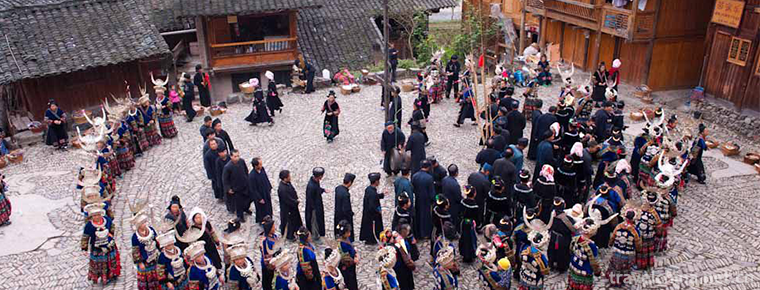
-
Betelnut Valley Limiao Cultural Tourist Area
Hainan Betelnut Valley Limiao Cultural Tourist Area was established in 1998. It is located in the Ganshiling Nature Reserve at the junction of Baoting County and Sanya City.
Views: 112 Time 2018-12-12 -
Chengdu Maoye JW Marriott Hotel
Chengdu Maoye JW Marriott Hotel is located in Tianfu Square, the heartland of Chengdu. It is about 30 minutes'drive from Chengdu Shuangliu International Airport to the hotel, opening the extraordinary.
Views: 225 Time 2018-12-16 -
Yuanshan National Forest Park
Yuanshan National Forest Park is located in the southwest of Boshan District, Zibo City, Shandong Province. It was established in 1992 with the approval of the Ministry of Forestry..
Views: 162 Time 2019-03-09 -
Chu opera
Chu Opera, a local traditional drama in Hubei Province, is one of the national intangible cultural heritage..
Views: 194 Time 2019-04-18 -
De ang Watering Festival
The De'ang Water-Sprinkling Festival (also known as the Water-Sprinkling Festival) is held seven days after the Qingming Festival every year. It is a three-day commemorative event that combines the th.
Views: 173 Time 2019-04-26 -
Legend of King Qian
The legend of King Qian is a local folklore derived from the life stories of King Qian Si of Wuyue. Linan is the hometown of King Qian. After his death, his legends have been widely circulated in Lina.
Views: 135 Time 2019-06-10 -
Hainan opera Qiongju Opera
In June 2008, Qiongju Opera declared by Hainan Qiongju Theatre and Haikou City was listed in the second batch of national intangible cultural heritage list with the approval of the State Council..
Views: 194 Time 2019-06-11 -
Legend of Zhaos Orphans
Zhao's orphan legend is one of the folk legends in Shanxi Province. In the folk of Yuxian County, the legends about Zhao's orphans are handed down orally and orderly. Every year, there are more than 1.
Views: 188 Time 2019-07-25 -
Xihua University
Xihua University, located in Chengdu City, Sichuan Province, is a provincial key comprehensive university with complete disciplines and multi-disciplinary development. It has been selected as "Ba.
Views: 227 Time 2019-08-31 -
Guan Yu
Guan Yu(? - 220 years), the word is long, then changed word cloud length. Hedong County Jie county (today) Shanxi Yuncheng People are called "beauty beard Gong". Early follow Liu Bei In the .
Views: 133 Time 2019-09-07 -
Nanchong Sports
By the end of 2019, Nanchong has 37 national youth sports clubs, 5 new national fitness routes and 1623 national fitness routes. Our athletes won 67 medals in national competitions and 288 in provincial competitions..
Views: 115 Time 2020-12-17 -
Dazhou peoples life
In 2018, the per capita disposable income of Dazhou residents was 20881 yuan. The per capita disposable income of urban residents was 30882 yuan, an increase of 8.8%. Among them, salary income was 17597 yuan, an increase of 7.3%; net ope.
Views: 143 Time 2020-12-20
